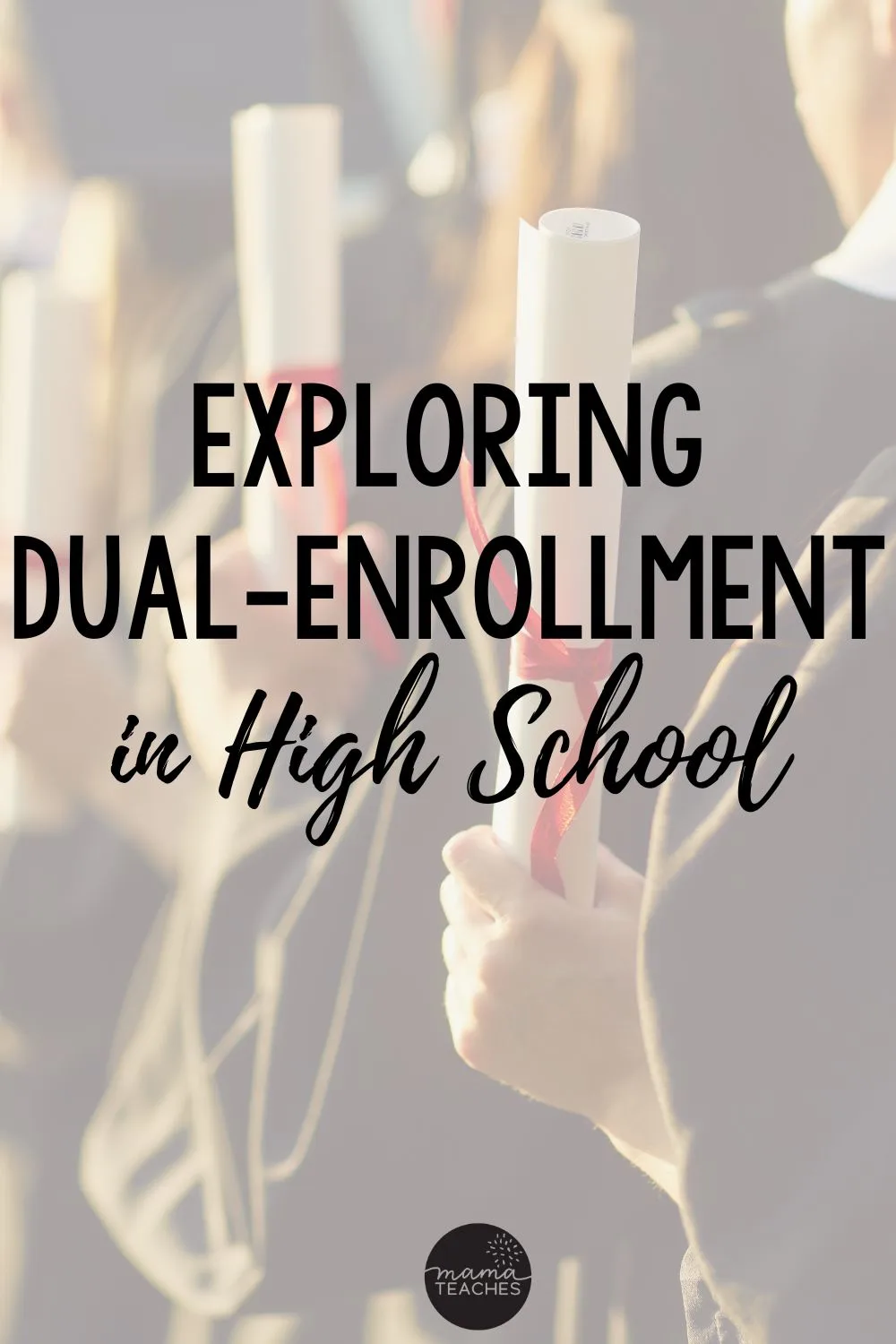Find out all the facts on dual enrollment, dive into its pros and cons, and discover how to succeed.

Checking into Dual Enrollment
Do you wonder if dual enrollment is the right choice?
Learn what it is, why it’s popular, and its pros and cons. Then, you can decide if it is the right next step.
What Is Dual Enrollment?
Dual enrollment is a program that allows high school students to take classes at colleges or universities and earn credit for both high school and college.
Students typically must apply for dual enrollment.
Though the application process differs at every high school and college, students typically show their readiness through their grades and test scores.
They may take a traditional standardized test such as the SAT or ACT, or they can take the PERT (Post-secondary Education Readiness Test).
The number of dual-enrollment classes offered varies by school district, as does the age of students allowed to apply.
As a dual-enrolled student, you may end up taking the college class at your high school, online, or at your local community college.

This article contains affiliate links to things that you might like.
Why Is Dual Enrollment Popular?
Dual enrollment is increasingly popular among students for several reasons.
Saves Money
Some states reimburse all or part of college class fees for dual-enrolled high school students.
Since these college classes may transfer to the student’s four-year college, students can knock out college classes in high school.
This means they may be able to save time in college and graduate sooner (which saves money on college tuition).
Offers and Alternative to AP
AP (Advanced Placement) classes also allow students to earn college credit in high school.
However, everything hinges on the results of the end-of-course exam. It all comes down to one day. That’s a lot of pressure!
By contrast, a dual enrollment course is graded like any traditional course: a combination of homework, quizzes, papers, projects, tests, and an end-of-course exam.
Smooths Transition to College
Dual enrollment means getting a taste of college academics while the student is living at home.
Students can get used to the college style and pace of learning before heading off on their own.
Dual-enrolled students find the transition to college academics easier.

Challenges of Dual Enrollment
Dual enrollment does have potential drawbacks.
Overloads the Student
A dual enrollment class is a college course. It is academically challenging and moves faster than a high school class.
(The typical college class covers in one semester what a high school class covers in one year.)
The student may not be ready to pile on college courses on top of his high school coursework and activities.
Impacts Extra-Curriculars
If the student must take classes at your local community college, consider how this will impact her schedule.
Unlike high school classes that all end at the same time, dual enrollment classes may run day to evening.
They may require the student to drive back and forth.
This may impact her after-school obligations like sports, work, and clubs.
Incurs Costs
Check with your county to find out the costs of dual enrollment.
You may be on the hook to pay for everything yourself. Or the county may only cover a portion of the costs.
(Don’t forget to consider the cost of books and supplies.)

Tips for Making the Most of Dual Enrollment
Students should follow these tips to make dual enrollment a successful experience.
Choose Your Courses Wisely
Look over the courses offered through dual enrollment. You may be limited to specific courses through the program.
Consider which courses interest you and start there.
You should consider which courses will help you earn credits toward your college degree.
Ease in; Don’t Overload
Don’t immediately jump into a packed schedule of high school and dual enrollment courses.
College classes are more demanding and take more time.
Start with one or two and ease into it.
This is especially prudent if you have to pay for dual-enrollment courses. Costs can add up!
Talk to Your Professors
Your professors are there to help you, but they will treat you like an adult.
Unlike high school teachers who may seek you out if you miss assignments or falter on a test, college professors typically do not do this.
It is up to you to seek them out if you have questions or need extra help.
Professors often have office hours where they will meet with students. Take advantage of these!
Introduce yourself and bring your questions.
Bonus: If you get to know your professor, they may write you a recommendation!

Considering Dual Enrollment
Dual enrollment is attractive to students and parents because it can save money, beef up a transcript, and shave time off of college.
On the other hand, it can be time-consuming and challenging for high school students.
It is undoubtedly worth it to investigate your options for dual enrollment!
